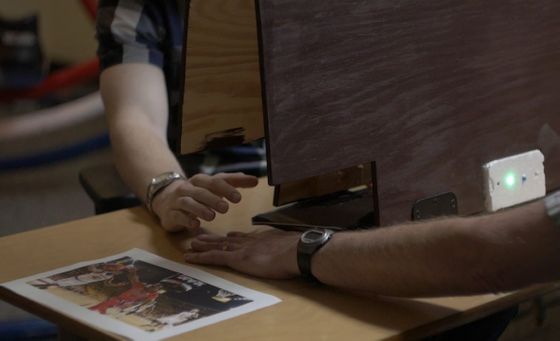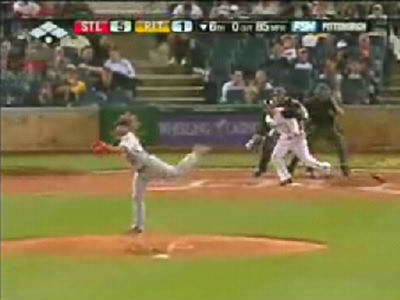An experimental result that human feels 'your own action is 0.05 seconds earlier than reality'

by
In the world of sports that competes in less than a second, both competing players say 'I was faster' and they may have a collision, but there is a bias that people actually feel so. An expert in cognitive science identified something.
Who hit the ball out? An egocentric temporal order bias | Science Advances
https://advances.sciencemag.org/content/5/4/eaav5698
'I got there first!' How your subjective experience of time makes you think you did – even when you didn't
https://theconversation.com/i-got-there-first-how-your-subjective-experience-of-time-makes-you-think-you-did-even-when-you-didnt-115833
It was Dr. Ty Tang and Professor Michael Mcbeth, who study cognitive science at Arizona State University in the United States, who found that people felt that they were 'earlier than themselves'. In an experiment conducted by Dr. Tang et al. With 16 students from Arizona State University, the subjects were first placed in a chair with their desks facing each other.

Then, black partitions were placed on the desk to hide each other, and then the capacitance sensors were attached to the left wrists of the two people, and the lamps attached to the partitions blinked as signals. Subject touches the other hand's left hand sensor with his right hand. At the same time as recording which touched the other's sensor earlier, we conducted a questionnaire to each subject asking, 'Whether you or yourself were faster?'

As a result of the experiment, 67% of the cases in which both touched the other at the same time indicated that 'I was faster'. Similarly, many of the people who were later than the other said that they were 'simultaneously.' I continued experimenting and made the other party not a human but a machine hand, and I was made to make a sound and have it be answered whether it was quicker of the sound or my touch, but the result was almost the same.
The image below shows the experimental results. The horizontal axis of the graph represents the 'actual results', with the left showing faster and the right showing slower. Also, the lower part of the vertical axis indicates the proportion of subjects who answered that they were earlier than the subject, and the upper part indicates that they answered that they were late. The color of each of the three lines represents the result of the experiment with the human opponent in orange, the mechanical opponent in green, and the blue in sound.

For example, looking at the lower left of the figure, it can be seen that those who are much faster than the other person have a higher rate of answering that they were faster. This result seems natural but ...

It can be seen that the graph is on the lower side of the vertical axis even if they are at the center of the horizontal axis, that is, they tend to say 'I'm quicker at the same time as the touch.'

This bias for thinking 'I was faster than my partner' was named 'Egocentric temporal order bias' by Tang et al. And when I analyzed the time that this bias affects, it was 50 milliseconds. In other words, 'humans think their actions 0.05 seconds earlier than reality'.
It was well known that 'the sense of time is subjective' before this experiment was conducted. For example, in an experiment conducted by neurologist and writer David Eagleman in 2007, the subject had a ropeless dive from a height of 50 feet (about 15 m) to a net on the ground, for many seconds We compared the actual drop time with the answer that we felt was falling. Then, it was said that almost all the subjects answered that it had fallen for a longer time than the actual drop time.
Dr. Tang concludes the paper that 'the main cause of the ball game debate has been identified. It is time,' said the experiment, which started with a sporting controversy.
Related Posts:
in Science, Posted by log1l_ks







